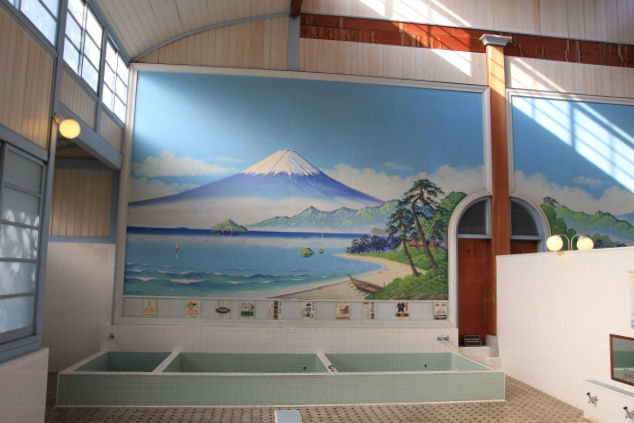🌿 A Touch of Japan in Our Classroom 🌿
- BJLC School
- 15 minutes ago
- 4 min read
In our classroom, we display a hanging scroll (kakejiku) and seasonal flower arrangements (ikebana).

In traditional Japanese houses, there is a tatami room with a special alcove called a tokonoma. A tokonoma is a space for welcoming guests warmly, often decorated with a calligraphy or ink painting scroll. These scrolls feature seasonal words or scenes, philosophical messages, or auspicious poems written in Chinese characters.
The calligraphy displayed in our classroom were written by my grandmother.
I display them with this with:
“Welcome to your Japanese learning journey. I hope this space helps you feel a touch of Japan and makes your learning more joyful.”
With that wish in mind, we display different scrolls throughout the seasons.
In front of the scroll, we also place a flower arrangement. There are many styles of ikebana, but in a tea room, it is known as chabana. These are arranged simply and naturally—like wildflowers in a field—so as not to appear overly decorative.
Traditional ikebana pieces are designed to be appreciated from the front, as they are displayed in the tokonoma. Over time, styles evolved. During the shogun era, dynamic arrangements emerged—symbolizing the strength and dignity of the shogun and his retainers.
As Western-style interiors became more common, ikebana also adapted.
Arrangements began to be placed on tables or consoles, designed to be viewed beautifully from three or four sides, or even from above or below, depending on the space.
In our classroom, the display area is arranged so that the flowers can be appreciated from the side as students walk in or while sitting diagonally in front. A Sogetsu school ikebana teacher creates each piece, drawing inspiration from the seasonal flowers and the calligraphy on display.
The Sogetsu school is known for its philosophy of freedom and creativity—it values individuality and constant renewal, rather than strict adherence to form.
Each flower arrangement expresses the wish:
“May you learn freely, be yourself, and grow with grace.”
When I was a child, I used to visit my grandmother’s house. In her tatami room, there was always a hanging scroll, and somewhere in the room, a small, lovely flower arrangement.
I didn’t pay much attention to it at the time, but even now, I still remember the gentle brightness of those flowers.
I hope that the students who visit our classroom will also carry with them such warm memories—that someday, they will recall this space with fondness and feel a quiet sense of happiness in their hearts. 🌸
= 日本語 =
私たちの教室には掛け軸と生花が飾ってあります。日本の伝統的な家には和室があり、客室には床の間があります。床の間にはお客様を温かくお迎えする為の、書道や墨絵の掛け軸が飾ってあります。季節の言葉や絵や、哲学的だったり縁起の良い漢詩の掛け軸が飾られています。
教室に飾られている書は私のおばあさんが書いたものです。「日本語を勉強しによくいらっしゃいました。少しでも日本を感じられるような雰囲気でより学びが楽しくなりますように。」という願いを込めて、季節ごとに色々な掛け軸を飾っています。
掛け軸の前には生花が飾られています。生花には色々な種類があります。茶室などでは茶花といい、季節の花が際立つよう野に咲く花のように素朴であまり華美になりすぎないように生けます。
伝統的な生け方のものは、床の間に飾って正面からのみ鑑賞するようなデザインになっています。また、時代ごとにデザインにも変化があり将軍時代には将軍とその家来を表わすかのように、ダイナミックなデザインのものもあります。
洋風の部屋が増えてくると、それに合わせて生花のデザインにも変化がありました。テーブルやコンソールの上に飾って、3方・4方から鑑賞しても美しいデザインや空間に合わせて上からや下から見るデザインなどもあります。
教室のディスプレー空間は横から鑑賞して、斜め前に座るような配置になっています。ここに草月生花の先生が季節の花と書から受けたインスピレーションに合わせて生花を飾ってくれています。
草月生花は「型」にとらわれることなく、常に新しく、自由にその人の個性を映し出すというのが特徴的な流派です。「自由で、自分らしく、のびやかに学べますように。」という願いが込められています。
子供の頃、おばあさんの家に遊びに行くと畳の部屋には掛け軸が飾ってあり、部屋の中にはいつもさりげなく可愛い花が飾られていました。じっくり観察していたわけではないけれども、今でもその花の明るさや可愛さの記憶が心に残っています。
教室を訪れる生徒達の心の片隅にもそんな記憶が残って、ふとした時に楽しい思い出を思い出して温かい気持ちになってもらえたらいいなと思っています。 ***** The Brisbane Japanese Language and Culture School では新規クラス開講の為、「おもてなしの心」を持った日本語教師を募集しています。生徒と共に日本語での会話を楽しみながら、日本・日本語・日本文化・日本の歴史・和の心などの理解を深めていきませんか。 詳細はこちらのページをご確認下さい。ご応募お待ちしております。 https://www.brisbanejapaneseschool.com/japaneseteachers







Comments